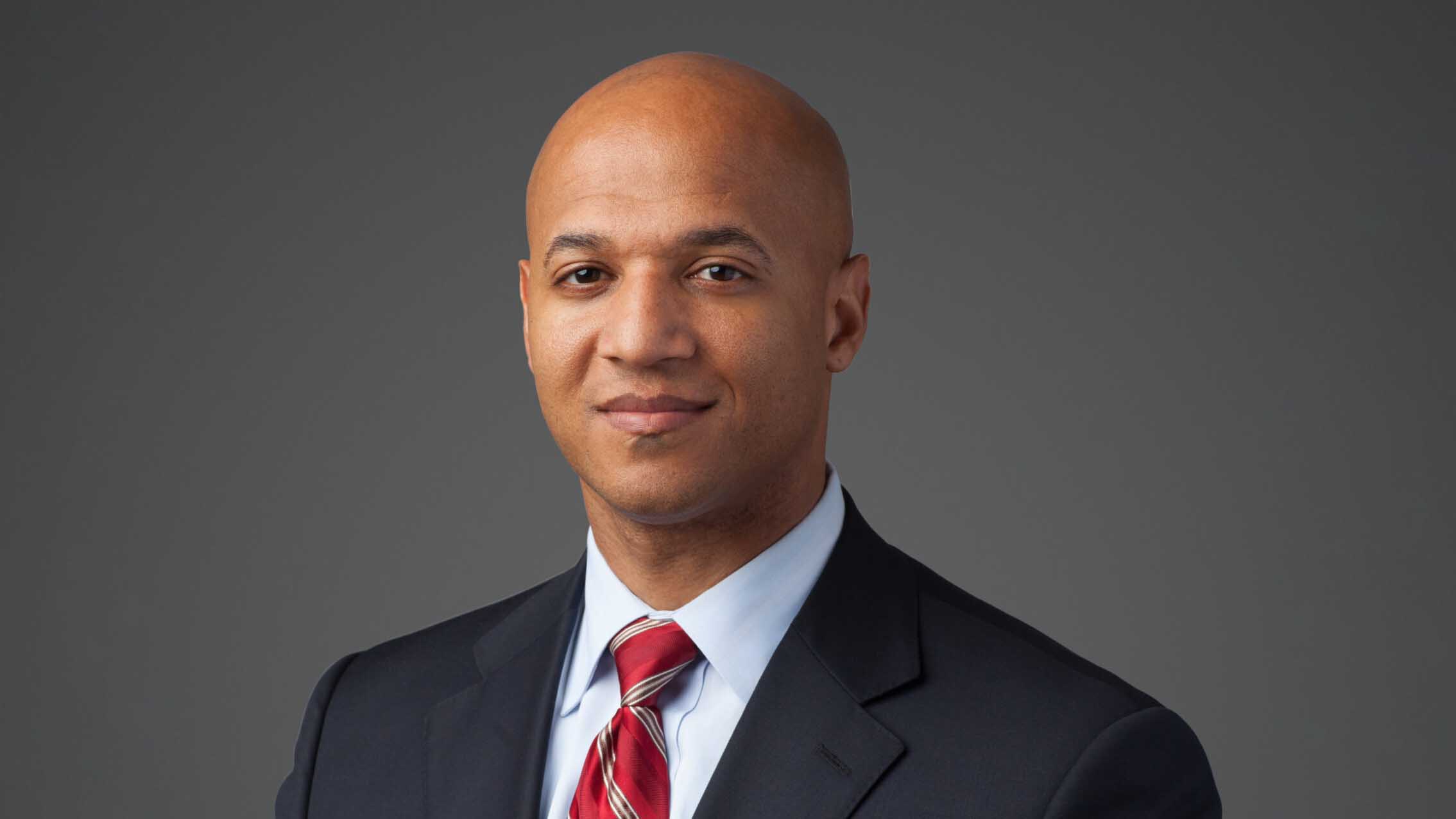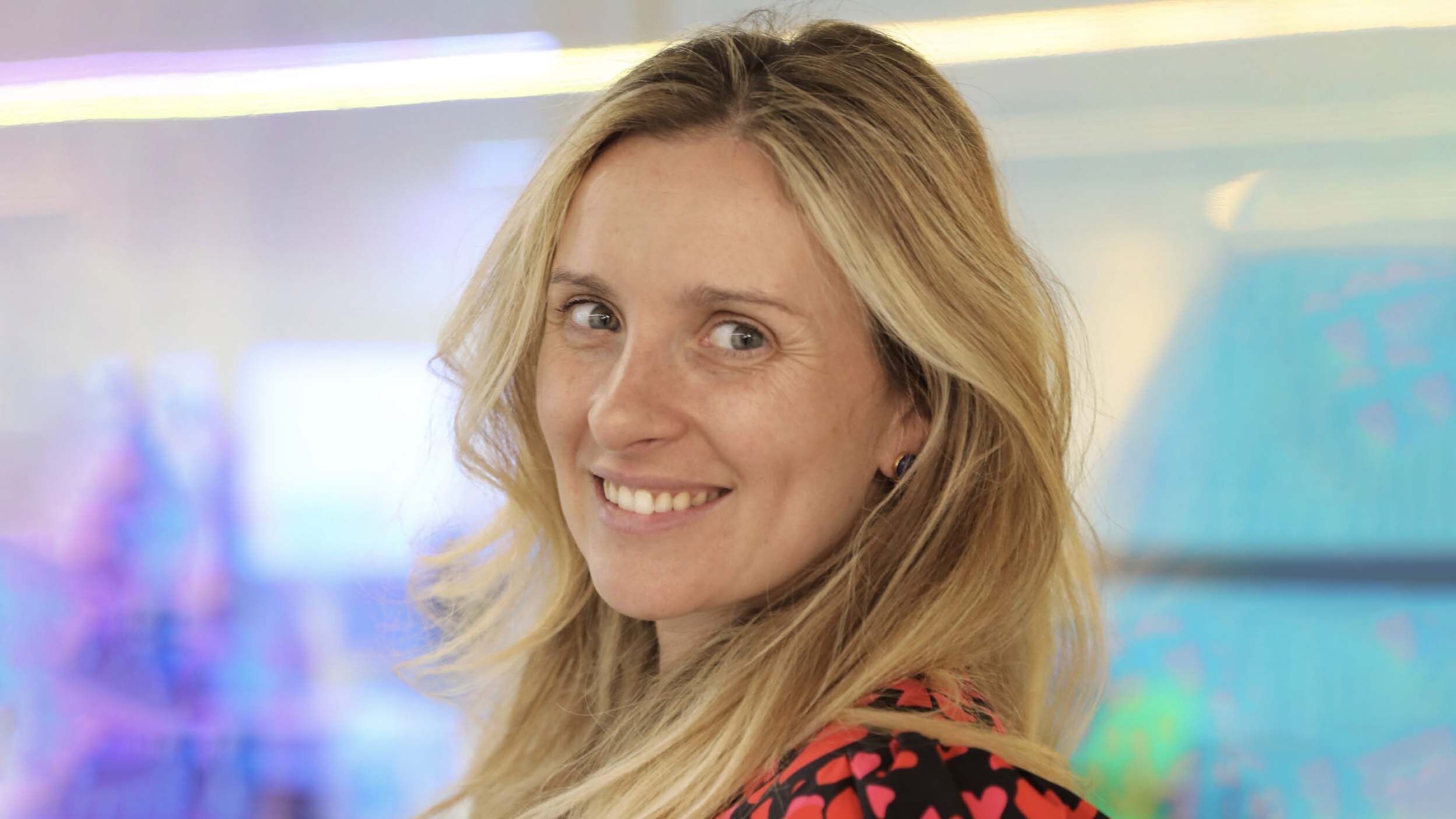BNP Paribas is a French banking and financial services giant with global headquarters in Paris. It has two major business lines: retail banking and services; and corporate and institutional banking. In the United States, BNP Paribas activities are mainly driven by Bank of the West but it also has a growing CIB Business on the East coast
L’Atelier, a subsidiary of BNP Paribas, was founded in 1978 to provide insight into the implications of, and the opportunities associated with, technological innovation. L’Atelier now advises large organizations, including BNP Paribas Group and its clients, on the latest digital trends, as well as on the definition and implementation of their digital strategies.
L’Atelier has a three-part mission:
- Watch
- Share
- Transform
L’Atelier accomplishes these in four ways:
- Though the prodigious production of content, published via its website atelier.net, a radio program, and on social media;
- Through events organized to create dialogue and information exchange around current innovation topics;
- Through a digital strategy advisory service, which helps put innovations into context for client companies, and
- Through L’Atelier Lab, which brings innovative entrepreneurs into contact with major corporations so that they can work together to invent and design new digital products and services.
L’Atelier has offices in Paris, San Francisco, and Shanghai and is considering Sao Paulo.
Nathalie Dore was appointed CEO of L’Atelier North America last fall. This represents a return for her, as she also worked at L’Atelier from 2001 to 2010.
Q. Nathalie, 1978 was surprisingly early for a bank to start a technology tracking unit. What was the genesis of L’Atelier?
A. Yes – the internet was even not born yet! 1978 was the year France decided to launch a Videotex network from an inexpensive terminal called Minitel. So at Compagnie Bancaire (a precursor to BNP Paribas) it was agreed that they needed to innovate in financial services and understand new kinds of technology. That was the beginning for L’Atelier.
Q. Why a “workshop”?
A. Because since the beginning they really wanted it to be not only a center where you analyze things but also a place where you do things so you understand the usage. It’s not only about the technology – it is also about the way the technology will be adopted. That’s why it was called L’Atelier.
Q. So the idea is to take the conceptual and making it practical, to show clients what the impact will be on their businesses?
A. Yes. We test new ideas for them. It is very practical. We like to turn the ideas into action.
Q. Is the rapid evolution of technology an opportunity for large financial institutions (and other incumbents in other categories) or a threat?
A. Actually, I think if you are prepared to adapt it is an opportunity. The bigger risk is not taking risks. So it is important for incumbent firms to be aware of that.
It’s for this purpose that banks have innovation labs. It can be possible to test things before a larger scale rollout and to minimize risk. For sure, you can turn change into an opportunity if you are able to move. Hello Bank is an example of how to turn a big evolution into an opportunity.
Q. Who are your clients at L’Atelier?
A. Our main client is BNP Paribas.
But, L’Atelier has a model that is quite unique. It’s not an internal innovation center; it’s an innovation lab that can work with other clients. The clients of the bank, for sure, but also other clients. We have clients in media, retail, automotive. I think this model is good for all of us. It’s good for the bank because we will have a broader view. And it’s good for us because it gives us a kind of freedom.
Q. Your non-BNP Paribas clients – are they all from France or are they from around the globe?
A. At L’Atelier North America we have clients in the U.S but the majority of our clients are based in Europe. As L’Atelier has offices in Europe and in Asia we have clients there as well.
Q. What areas of innovation are you following most closely in 2015?
A. Globally, with L’Atelier Paris and L’Atelier Shanghai, we have some things we are following all together such as FinTech: from payments to personal financial management to peer-to-peer. We follow all the trends and players in FinTech.
We also follow smart cities; I would say smart cities writ larger because for us it is also including the future of retail, it is also including smart living. We also track innovation around eHealth. When they asked me to take the position here they were happy to have my experience in insurance because eHealth is also an area L’Atelier is looking at at the global level.
And here in San Francisco there are also big trends we can’t miss such as the sharing economy, the internet of things and also other things such as FoodTech. So it is a mix of innovation we track on a global scale with the other offices and also some things that are more specific to Silicon Valley.
Q. Do you approach your work with an idea of the needs of BNP Paribas and clients in mind, or does your research take you where it takes you? Is it more green field or client driven?
A. It is more an open field. We are very free to investigate where ever we think it is worth it for the bank and also for our clients. They let us investigate where we think it could be useful to do so. That’s why we are not working with a big target at the beginning of the year. We think we must be more flexible on the topics and also be able to push some convictions we have to our clients. They prefer to give us freedom of investigation.
Q. Do the three L’Atelier offices work independently or in coordination? Do they differ in what they do?
A. We really work close together. We have some topics we share because our clients want to have a 360 degree view on the strategy work we do for them. So it’s important to work with Paris and Shanghai. Often, the usage and the implications of innovation are really different from place to place, especially in Asia.
At L’Atelier we really want to be close to our markets and close to the usage of technology in the markets. We are designed to be global with local footprints.
To give you an example, you know the peer-to-peer lending platform Lending Club partnered with Google recently for the small business clients of Google, and two weeks later they partnered with Alibaba. If you watch only the U.S. market you miss part of the story and we won’t be as good as we like for our clients. That’s why we work closely with the other teams.
And the differences – we have media activity at L’Atelier because since the beginning we want to share things. In Asia, the media activity is less important. So that’s the main difference.
Q. Your team produces a tremendous amount of content. With web, radio and TV properties, and eight different newsletters, can I say you are a media company? Is that a fair assessment?
A. Actually, we discuss this internally and we have this debate because we do produce a lot of content and we have these channels of distribution. But, we don’t really consider ourselves as a media company because we think we are doing so much more. The media for us is a way to continue to track innovation. It’s a way to see things and to share things.
What people see of L‘Atelier is the media side. It’s very public and we share it. It’s great for the image of BNP Paribas but it is only a small percentage of what we are doing. We are running lots of projects around digital strategy for our clients but usually we can’ talk about it because it is so confidential.
Q. And the content is available to anyone who is interested and not just for clients?
A. Yes. That is in the DNA of L‘Atelier. We have a mission also to open the eyes of the market and to push the debate on some topics we discuss such as smart cities. That is why the objective is to share with a larger audience. That’s the way that L’Atelier was built. We always try to explain the technology or the model in a relatively simple way. We want be helpful to an audience that ranges from business people to young students who will be the next entrepreneurs. And so the audience for the website is quite large.
Q. Is the mix of media L’Atelier uses changing?
A. We have all these projects that are ongoing, but we know we live in a world where people are hyperconnected and they will want more and more on-demand content, personalized content, etc. So we are experimenting around a mix of push and pull with delivery that will be more personalized. We are also experimenting with mobile at the moment and something will be launched soon!
Q. How does L’Atelier Lab work?
A. We have the lab here at our offices. The first mission of the lab is to do sourcing, so L’Atelier is connecting with the right startups regarding the topics we want to explore for the bank or for other clients.
Then it can be for a technology that can be useful, forming a partnership around the technology. L’Atelier Lab participates in the prototyping. It’s an execution partnership between the client, the startup, and L’Atelier. Our clients are always very big corporates so there is a difference in culture, and work style, so L’Atelier is bridging the cultures between startups and clients, which is useful as you can imagine.
The prototyping can happen within an acceleration program or not. As an example, L’Atelier Paris participates in InnovandConnect, which is an acceleration program with clients of BNP Paribas. InnovandConnect 2015 will be starting up in the next few weeks.
If a client wants to do some prototyping but does not want to participate with an acceleration program, we can also help with the sourcing of the startup and do the prototyping with our clients even if there is no acceleration program.
Q. Does L’Atelier invest?
A. Not directly. We can help the bank to identify some startups that can be part of a fund but L’Atelier does not invest directly and does not take equity. We can offer office space through L’Atelier Lab when we are prototyping. But we are not renting out space.
Q. Do you work with incubators, accelerators and universities?
A. Yes – it’s very important for us to be part of the startup innovation ecosystem. That’s why we have partnerships with loads of incubators, accelerators and universities. Le Camping, which is now lodging with NUMA, we have a partnership with them. We also have a partnership with French Tech Hub, an accelerator for French startups who want to enter the U.S. market. We share the office with them and we have a good partnership with them. We are also involved with the MIT innovators under 35 program. We like these kinds of partnerships because it’s a way for us to see innovators and interesting startups at the very early stages.
Q. Is the approach of L’Atelier different in your home market, Paris, where you may be fostering an innovation ecosystem, as opposed to observing in a more established ecosystem like Silicon Valley?
A. Both in Paris and San Francisco there is an ecosystem of innovation. It started here but now in Paris you have loads of incubators and even the state wants to help. I think the difference is on of pace and I also think the difference is one of culture. Here, the idea is launch fast, fail fast, and if you fail that it is okay. In Paris I think the culture is not as comfortable with failure. Things don’t move as fast and the culture is more risk adverse.
Q. Does L’Atelier work with Cardif? I believe they have their own innovation lab.
A. They have their own innovation lab called Cardif Lab. I had the chance to work on it when I was part of BNP Paribas Cardif. We do work closely with BNP Paribas Cardif.
Regarding Cardif Lab, it’s a very good place to experiment with things like internet of things and insurance. They were early adopters of connected home. They launched a smart-home insurance product based on sensors you can use to detect water leaking or fire. They are very innovative and they were the first ones to move on it and to test it. It’s a very interesting example, I think.
Q. What can we expect to see from L’Atelier in 2015?
A. Here in L’Atelier North America we are working on the topics I mentioned – FinTech, smart cities etc. We have a lot of topics to cover, and I think it will even accelerate. We are doing prototyping and testing for BNP Paribas – I think we will do even more in the coming year.
Q. Are you hiring?
A. Globally, yes, but in the U.S. we have ten people are fully staffed. We have a great team.
Q. I noticed that people who work at L’Atelier may leave but often come back. You are just the latest example. It must be a happy place to work.
A. When I took the position here, I can’t tell you how many people said, “L’Atelier! You have the greatest job.” For sure, I think it’s because of the topics. We are here to work on the future of banking on the future of digital, on the future of media. The content of the job is really interesting, tracking interesting startups and ideas.
I think yes – that’s why I really appreciated working at L’Atelier in Paris and that’s why I wanted to come back. It’s like being in a startup – because L’Atelier globally is less than 40 people – but with the power of a big group behind it. It’s really interesting to work in such a structure with people that are really passionate about L’Atelier’s mission.
# # #




17 comments On All About L’Atelier
All about l’Atelier BNP Paribas : http://t.co/r1m7ktfgkw @atelier_us @redphase #innovation
RT @AgatheFoussat: All about l’Atelier BNP Paribas : http://t.co/r1m7ktfgkw @atelier_us @redphase #innovation
RT @atelier_us: “The bigger risk is not taking risks” Everything you need to know about @atelier_us Thks to our CEO @Nathaliedore ! http://…
RT @atelier_us: “The bigger risk is not taking risks” Everything you need to know about @atelier_us Thks to our CEO @Nathaliedore ! http://…
Find out more about @atelier_us & our vision with an Interview from our CEO @Nathaliedore http://t.co/3VIoKUegU8 #innovation #lab
RT @atelier_us: “The bigger risk is not taking risks” Everything you need to know about @atelier_us Thks to our CEO @Nathaliedore ! http://…
Find out more about atelier_us & our vision with an Interview from our CEO Nathaliedore http://t.co/9N6Attnxes #innovation #lab #bigontop
RT @atelier_us: “The bigger risk is not taking risks” Everything you need to know about @atelier_us Thks to our CEO @Nathaliedore ! http://…
RT @atelier_us: “The bigger risk is not taking risks” Everything you need to know about @atelier_us Thks to our CEO @Nathaliedore ! http://…
RT @AgatheFoussat: All about l’Atelier BNP Paribas : http://t.co/r1m7ktfgkw @atelier_us @redphase #innovation
All About L’Atelier http://t.co/Wv6nl9DwCi
Source Media:
Blue Dun
URL publication presse:
http://t.co/AUhUK2qurv
Date de parutio…
RT @redphase: Interview with @Nathaliedore, CEO of @atelier_us, the North American innovation research arm of @BNPParibas_com: http://t.co…
RT @redphase: Interview with @Nathaliedore, CEO of @atelier_us, the North American innovation research arm of @BNPParibas_com: http://t.co…
RT @redphase: Interview with @Nathaliedore, CEO of @atelier_us, the North American innovation research arm of @BNPParibas_com: http://t.co…
RT @AgatheFoussat: All about l’Atelier BNP Paribas : http://t.co/r1m7ktfgkw @atelier_us @redphase #innovation
RT @AgatheFoussat: All about l’Atelier BNP Paribas : http://t.co/r1m7ktfgkw @atelier_us @redphase #innovation
redphase: New blog post: All about L’Atelier. http://t.co/uRHfIiUj54 The #innovation and technology tracking arm of BNP Paribas. http://www.ceof…